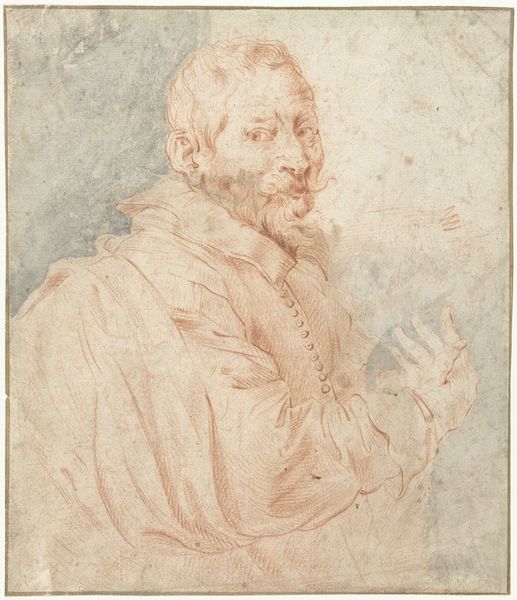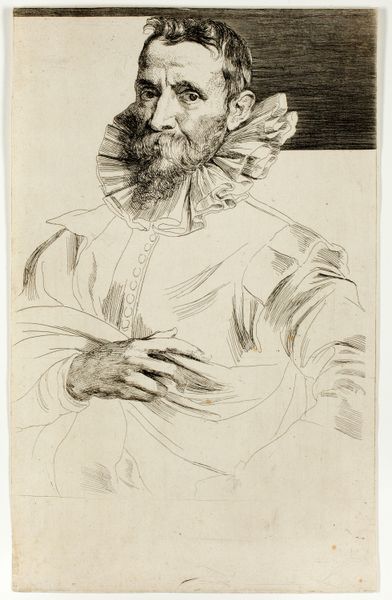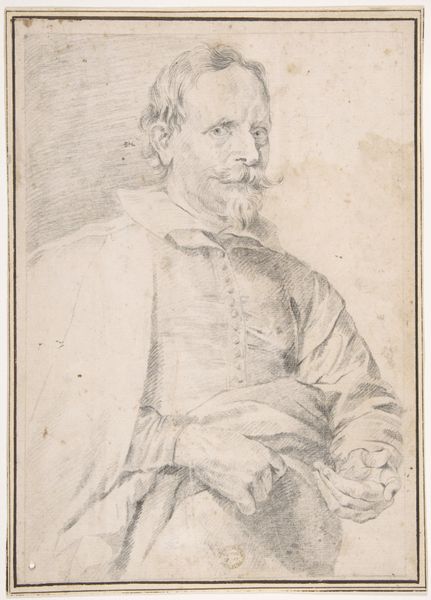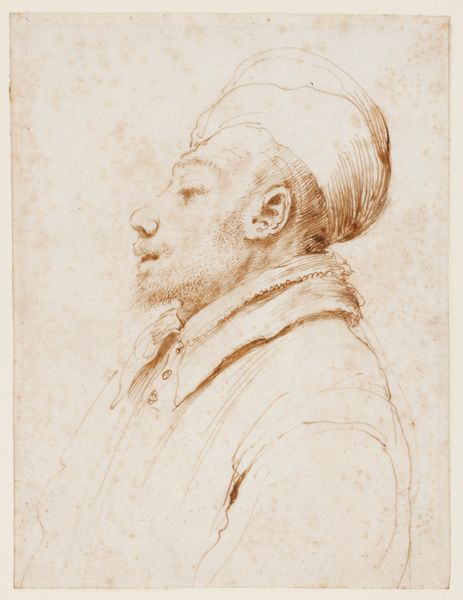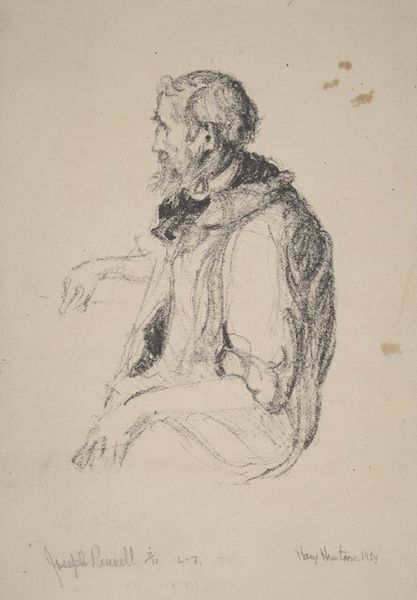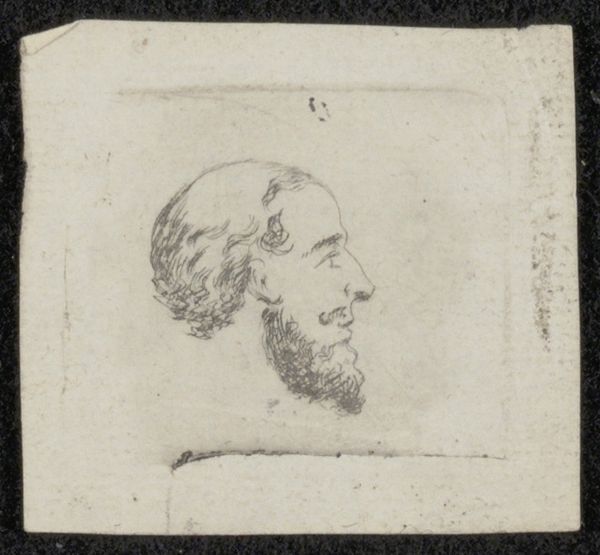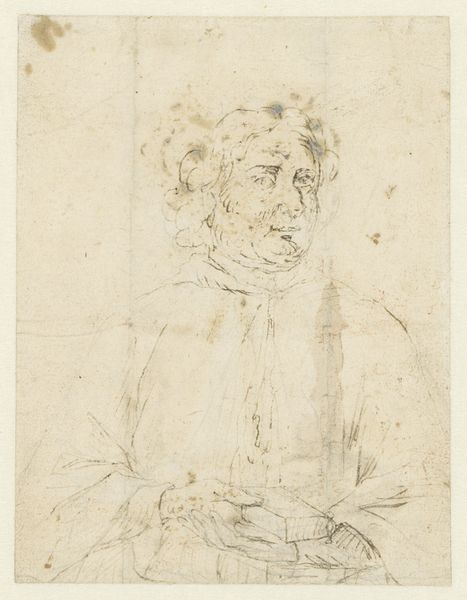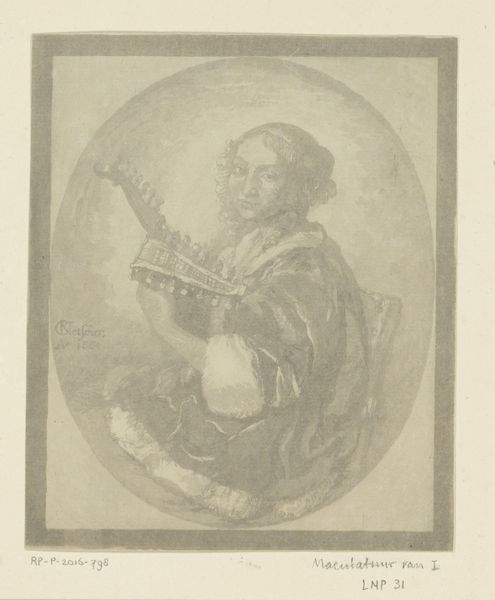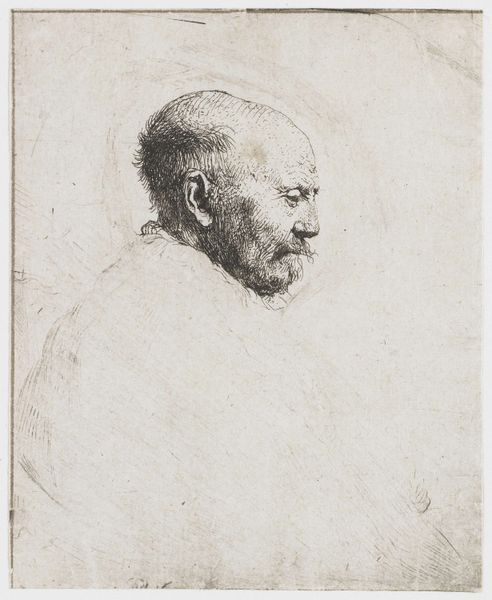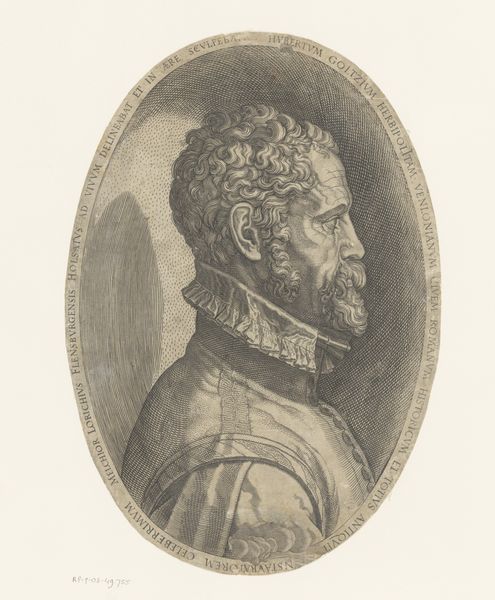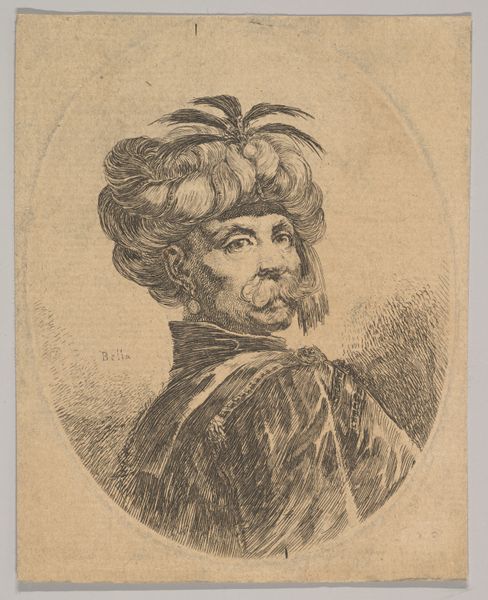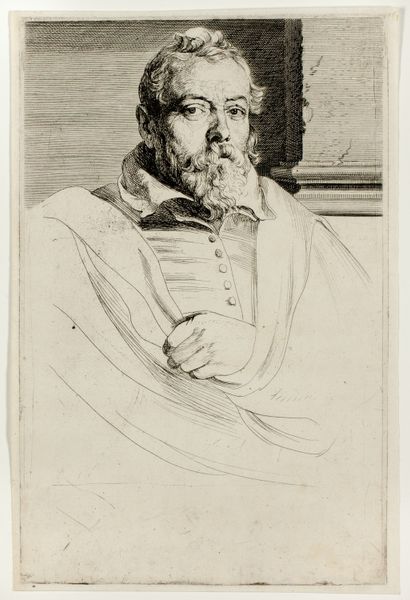
drawing, charcoal
#
portrait
#
drawing
#
baroque
#
charcoal drawing
#
figuration
#
pencil drawing
#
charcoal
Dimensions: height 247 mm, width 270 mm
Copyright: Rijks Museum: Open Domain
Curator: Giacomo Cavedone’s charcoal drawing, “Naar links opziende man, met gespreide armen”, roughly translated to “Man Looking Left, With Arms Spread,” made sometime between 1588 and 1660, is a striking piece. The use of charcoal really amplifies its presence. What's your first impression? Editor: My immediate reaction is one of drama and awe. The upward gaze, the spread arms... it suggests supplication or perhaps divine inspiration. The monochrome palette adds to the intensity, as if we're witnessing a moment outside of time. Curator: That sense of timelessness certainly speaks to its Baroque context. Consider how the Catholic Church, a major patron, influenced art during this period. Artists like Cavedone captured heightened emotional states, reflecting spiritual ideals prevalent in Counter-Reformation society. Editor: Absolutely. And the pose—arms outstretched, head tilted towards the heavens—is loaded with Christian iconography. It calls to mind depictions of saints in ecstasy or figures reaching for salvation. One wonders, did viewers at the time interpret this man as experiencing some form of revelation? Curator: It's quite possible. We should also acknowledge the power of institutions in canonizing art. It shapes whose works get seen and how they are interpreted over centuries. Consider the collecting habits of museums and galleries. Editor: A point well taken. Speaking of symbols, look at the man's clothing. The robe, simply rendered as it is, still carries visual weight. It lends him an air of authority, almost priestly. Could this image tap into our collective memory of religious ceremony? Curator: It makes sense given the period's aesthetic leanings toward theatrical gestures of religiousity, something often politically influenced and propagated through workshops. Editor: I find myself connecting with the sense of searching, the implied movement upwards. Regardless of specific context, Cavedone captured a universal human experience of longing, whether for spiritual or secular fulfillment. Curator: In the end, whether we view the piece through a historical or an iconographical lens, its raw emotionality still resonates strongly today. Cavedone’s use of charcoal lends such energy to the historical weight we place upon it. Editor: Indeed. It’s fascinating how an artwork from so long ago can still elicit such potent feelings. It encourages me to explore what remains with me after the viewing.
Comments
No comments
Be the first to comment and join the conversation on the ultimate creative platform.
